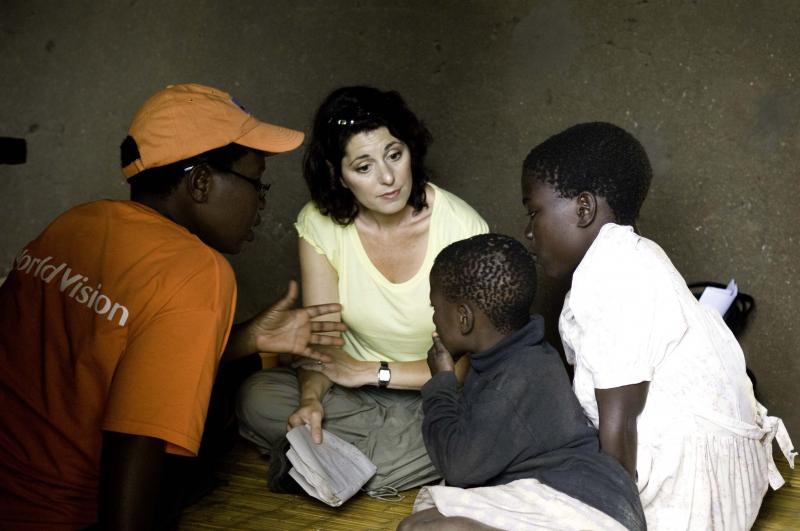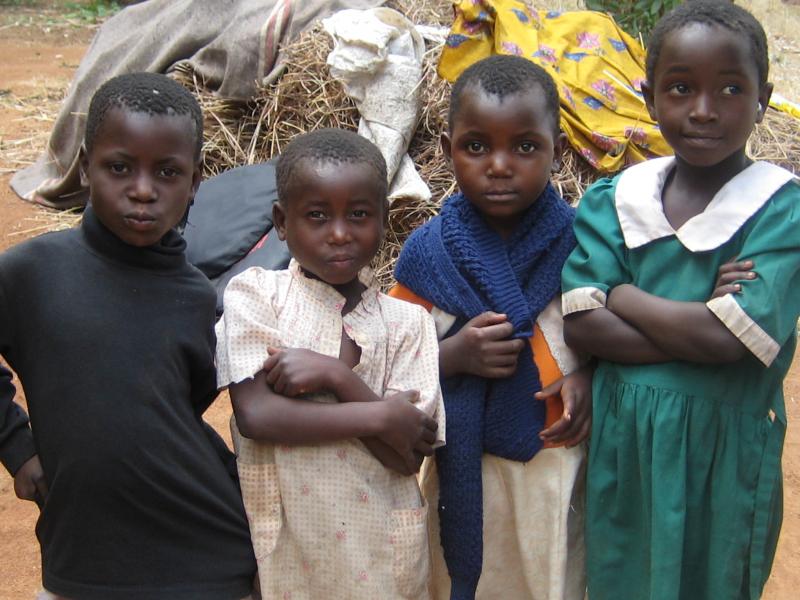
Tonight I’m sitting at the table with my kids watching them do their school work, my husband and I both close by working on our laptops. We’re together as a family, in a warm house, our stomachs are full.
Talk to any mom with school-aged kids and she’ll tell you about homework struggles. My kids are no different. They sometimes get frustrated with their homework, and I get it. It’s exasperating to sit at a table struggling with work you don’t understand when you’d rather be playing or reading or talking to your friends—anything but school work.
But I get frustrated too, not because the work is hard but because in 2009 I went on a trip to Malawi that changed my life. It was there I met little Grace who my family has been sponsoring for three years.

I also met a 15-year-old girl who was raising her little brother and sister—their parents had died of AIDS. She couldn't go to school because she spent every waking hour scrounging for pennies to feed her siblings.

She’s not alone. There are millions of children around the world forced to work due to circumstances like these or because they are forced into it.
Let that sink in for a moment. There are children being taken away from their families and forced to work at jobs that are physically demanding and dangerous. Child slavery is very real and it’s happening right now.
Can you imagine your children, the ones you spend your life protecting, being forced to work in a dangerous job against their will? Your daughter becoming a sex slave? Your son forced to work in a sweat shop 14 hours a day? Or both spending their days swinging machetes in a cocoa plantation?
World Vision calls this "3D work" — dirty, dangerous, and degrading.
When World Vision contacted me about their End Child Slavery Campaign, I have to admit, I didn’t know a lot about it, but the more I researched, the more horrified I became at the statistics.
![]() The ILO estimates 115 million children do "3D" work. It's happening in places like factories, farms, fishing boats, and private homes.
The ILO estimates 115 million children do "3D" work. It's happening in places like factories, farms, fishing boats, and private homes.
![]() Globally, an estimated one million children are involved in mining work alone.
Globally, an estimated one million children are involved in mining work alone.
![]() Boys outnumber girls in all age groups comprising more than 60 per cent of all children doing hazardous work.
Boys outnumber girls in all age groups comprising more than 60 per cent of all children doing hazardous work.
The shirt you’re wearing right now could have been made by a child who sewed it while working a 14-hour shift in a sweltering hot factory. The fish you’re eating caught by a child who was only allowed to sleep one hour a day. Right now there is a little girl out there who is selling her virginity to help feed her family.
It’s horrifying and it’s very real. But there are things you can do to put an end to child slavery.
First, you can visit World Vision and be the voice for the world’s children by signing this petition. Then send the link to everyone you know so they can sign it too.
Second, think before you buy. Each time you purchase coffee, buy a new outfit, or even cook fish for dinner, you can be affecting a child half way around the world. Before you buy anything, read the label and ask questions about where the product came from and who made it.
Third, talk to your kids and educate them on why it matters where their toys, food, clothes, and electronics come from. Teach them why it’s important to base purchases not only on cost but how and where it’s made. Teach them there are Fair Trade alternatives.
Tonight when my kids close their school books we're going to have another chat about what’s going on in the world they live in. I’m going to talk to them about the children who don’t have the privilege of getting frustrated over their homework because they are being forced into slavery. My children need to know they can make a difference.
You can too.

Want to know more? Read this story from Debbie Wolfe to learn how you can make a difference just by choosing the products you buy or learn about the sad state of children and human trafficking from Carleen McGuinty.
Visit World Vision’s End Child Slavery campaign at endchildslavery.ca.

